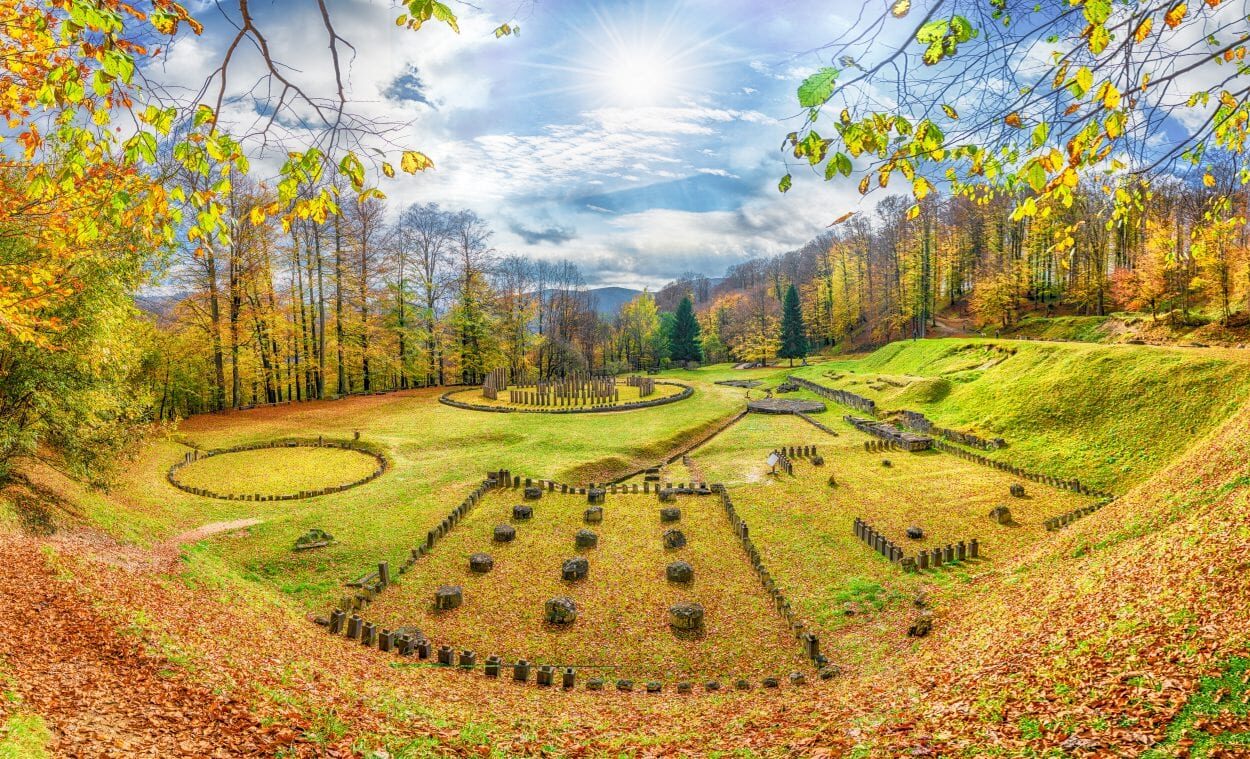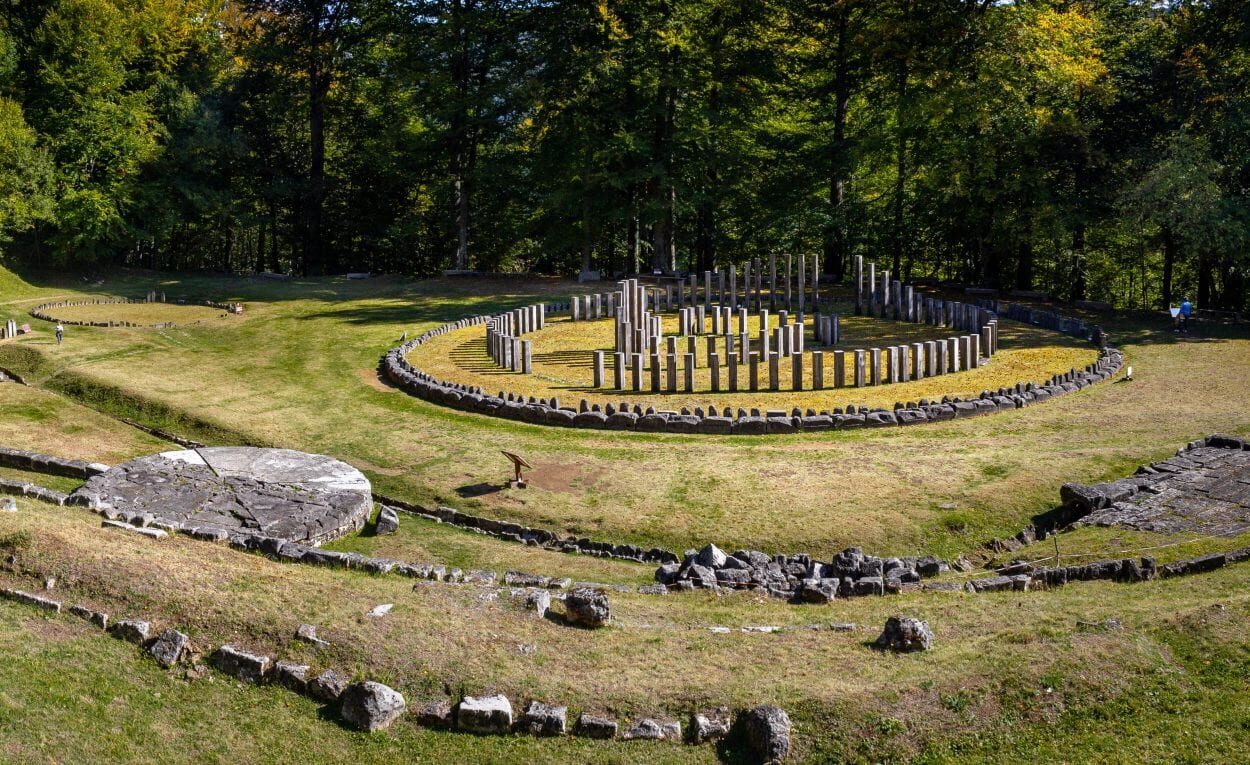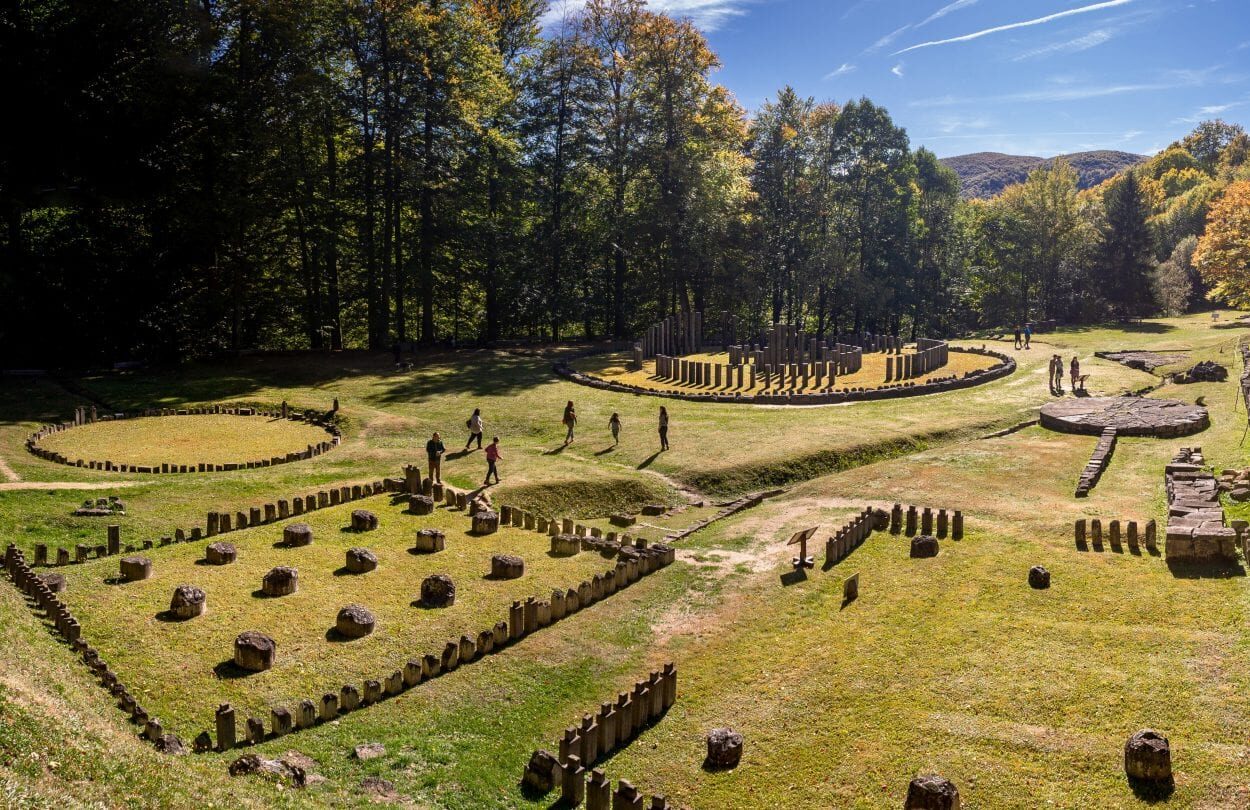Sarmizegetusa Regia was the capital and political centre of the Dacians, located in the Orăştie Mountains of the Grădiștea Muncelului Natural Park, in present-day Romania.

© Balate Dorin - Shutterstock
During the reign of the Thracian King Burebista (82/61 BC to 45/44 BC), the Getae and Dacian tribes were unified into the Dacian Kingdom, with the capital being moved to Sarmizegetusa Regia (possibly from the Geto-Dacian stronghold at Argedava).
Sarmizegetusa Regia was situated at an elevation of 1200 metres near a mountain summit, serving as a nucleus of a strategic defensive system that included the fortresses of Costești-Blidaru, Piatra Roșie, Costeşti-Cetățuie, Căpâlna and Băniţa.

© Andrei Lucian Vaida – CC BY-SA 4.0
The stronghold was built over five terraces, covering an area of 7.4 acres split into a ceremonial zone, a residential district, and a fortress for state and civic functions.
The ceremonial zone contained some of the largest Dacian sanctuaries, consisting of a number of rectangular temples, an altar grouped on two large terraces, and a circular sanctuary with a setting of timber posts in the shape of a D, surrounded by a timber circle which in turn was surrounded by a low stone kerb for astronomical observations or a solar calendar.
Archaeological findings suggest that the Dacian god Zalmoxis and his chief priest played a central role in Dacian religious worship at Sarmizegetusa Regia, a deity who Herodotus gives mention in his
Histories Book IV, 93-96 which states: "93. the Getae are the bravest of the Thracians and the most just. 94. They believe they are immortal forever living in the following sense: they think they do not die and that the one who dies joins Zalmoxis, a divine being; some call this same divine being Gebeleizis. Every four years, they send a messenger to Zalmoxis, who is chosen by chance."

© Andrei Lucian Vaida – CC BY-SA 4.0
During the First Dacian War in AD 102, Dacia was invaded by the Emperor Trajan as part of the Roman Empires eastward expansion. The Dacians were defeated and made concessions by surrendering the territories of Banat, Tara Haţegului, Oltenia, and Muntenia in the region south-west of Transylvania.
However, during the years AD 103-105, the Romans claimed that the Dacians failed to respect the peace conditions of their surrender, resulting in Sarmizegetusa Regia being sacked and burned in AD 106 (which is recorded on Trajan's Column in Rome).
The Romans established a military garrison at Sarmizegetusa Regia and moved the capital of Roman Dacia 40 km from the ruined Dacian capital, naming it - Colonia Ulpia Traiana Augusta Dacica Sarmizegetusa.



Thus Roman Empire's . . .
R.C.